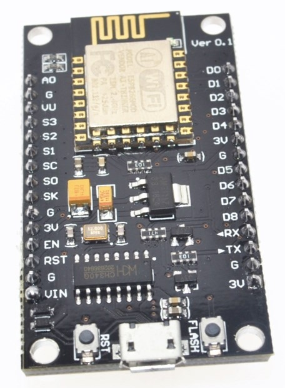A few days ago a package arrived from SeeedStudio: the new NodeMCU board V1.0 (see picture)


HI, i am using ESP8266, but my computers says unknown device even my drivers are up to date but port doesn't appear in Arduino. Please help me 0hEuEC66yR.png) i don't know what is wrong. Either i am mis&hellip. Thx Bjoern, I was struggling the whole afternoon with my new ESP8266 12E rev2, mounted on Mac Air + Sierra. Your driver „Winchiphead for their USB Serial bridge CH34“ works!!! (at least with blink). Heartfelt thx Manlio (Milan). ESP8266 – WeMOS D1 mini – ch340. When you connect the WeMOS D1 mini board for the first time on your Windows computer through a USB cable, it might be the case to install a USB-to-SERIAL driver. The board has a USB-to-SERIAL converter ( CH340 chip). The driver is available for download here. Install the driver.
| The NodeMCU V1.0 (picture from here) |

On paper it has some nice advantages compared to the old V0.9 version or also to other ESP8266 dev boards: you can directly connect it to your computer for programming and you won’t need an additional USB-to-Serial programmer or an external power supply. The USB connector does the job. The only problem: they must have changed something on the interface. Flashing doesn’t work out of the box anymore:
I’m programming on a Mac, so all the fancy Windows based flashing tools won’t work for me directly. I usually use the adapted Arduino IDE or the esptool.py to upload new images to the device. This posts describes how you can flash the new hardware despite the problems with the esptool. Basically it shows how you can use the original Windows tool from Espressif from your Mac OS X system, even if it is made for Windows.
- Download and install driver for the CP2102 from here: https://www.silabs.com/Support%20Documents/Software/Mac_OSX_VCP_Driver.zip
- If you don’t already have it install homebrew: http://brew.sh/
- Install wine:
I had to work around some issues with brew and wine. Write a comment if you want to know how I resolved them…
- Download the latest Flashing tool from Espressif:
http://bbs.espressif.com/viewtopic.php?f=5&t=433 - Install unrar (if you don’t already have it):
- Unpack the flash tool:
- Install unrar (if you don’t already have it):
- Enter the directory and start the Flashing Tool:
- Now that the wine directory has created enter the dosdevices folder and create a symlink to your NodeMCUs tty device:
- Select your image and adjust the settings according to this screenshot:
ESP Flash Tool started from wine: adjust the settings accordingly - Now connect the NodeMCU module using USB and press the RST button while you keep pressing the FLASH button. This will put the module into the right state for flashing
- Now click START in the flasher tool and wait until it is finished. Click RST again and have fun.
I hope that the esptool gets fixed quickly to work with the new hardware. I’m also not sure whether the problems comes from the USB-to-Serial converter or rather from the ESP-12E module. I suspect it is the later, but I couldn’t find anyone complaining about problems with the ESP-12E in general.
Shopping Links:
- From SeeedStudio: http://www.seeedstudio.com/depot/NodeMCU-v2-Lua-based-ESP8266-development-kit-p-2415.html
- From AliExpress: Wireless module NodeMcu Lua Nodemcu WIFI Network Development Board Based ESP8266 FZ1390
Related posts:
Esp8266 Mac Driver Download
When you connect the WeMOS D1 mini board for the first time on your Windows computer through a USB cable, it might be the case to install a USB-to-SERIAL driver.
Esp8266 Driver Mac Os

The board has a USB-to-SERIAL converter (CH340 chip).
The driver is available for download here.
Install the driver
To make sure that is ok, check the “Device Manager” to see if your port is available and note the port number (in my case, COM6)
Esp8266 Mac Driver
In Arduino IDE make sure to select the proper COM port
Esp8266 Mac Driver Free
If you can compile and upload an empty sketch, you’re ready for IoT!